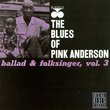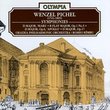| All Artists: Toduta, Simon Title: Concerti 2 & 4 & For Winds Members Wishing: 0 Total Copies: 0 Label: Electrecord Release Date: 9/1/1993 Genre: Classical Styles: Chamber Music, Forms & Genres, Concertos, Historical Periods, Modern, 20th, & 21st Century Number of Discs: 1 SwapaCD Credits: 1 UPCs: 828475012522, 5015524021252, 723721578725 |
Search - Toduta, Simon :: Concerti 2 & 4 & For Winds
 | Toduta, Simon Concerti 2 & 4 & For Winds Genre: Classical
|
CD DetailsSimilar CDs
|
CD ReviewsMildly interesting music, worth exploring for the adventurou G.D. | Norway | 09/03/2009 (3 out of 5 stars) "I think it is safe to say that the music of Sigismund Toduta (1908-1991) is an unknown quantity to most people, yet the fine music of this disc is certainly worth hearing, especially to those who already have a liking for later Enescu, even if none of the works on this disc quite qualifies as masterpieces. The Concerto no. 2 for string orchestra dates from 1973 and opens with a Preludio (based on a motif from Enescu's third violin sonata) which has what sounds like an improvisatory structure with rhythmic freedom and many changes of tempo; the following Fugue is very much in the mold of Enescu, but the polyphonic writing is elegant and attractive. The third movement, Recitativo e arioso exhibits much the same atmosphere as the first movement, but in a broader more lyrical manner; again, some of the material is lifted from Enescu (first piano sonata). The final Toccata is rhythmically driven and sports some nice playing with sonorities. Overall, while hardly very consequential, this is an attractive work of some merit, well worth hearing (and stylistically invoking the music of the 30s rather than the 70s).
The Concerto no. 4 for strings and organ (1980) is written in the same style, but this time utilizing Renaissance techniques in the framework. The first movement is thus a succession of five ricercares based on a diatonic cyclic cell, whereas the second uses ostinati overlaid with cantabile tunes. The contrapuntal third movement is more chromatic and the fourth a series of three fugues with a gradual increase in rhythmic complexity. The fifth movement, Chorale, is written in a hymn-like manner and the sixth closes off this attractive work in a folk-melody based manner (with much rather complex writing). Unfortunately, as opposed to the second concerto, this concerto is allotted a single track on the disc. The Concerto for winds and percussion is a work of inventive sonorities where Baroque models seem prominent (the movements are intrada, caccia, recitative, ostinato, finale - but all on a single track); the movements are varied in character with imaginative textures and deploying interesting techniques in an attempt to synthesize the character of Romanian folk music with more generic old and contemporary genres and techniques. The performances are spirited and full-blooded and manage to whip up some excitement for the music; they are, on the other hand, a little rough at times - not always quite in tune or hitting the right notes at the right time; but this matters less than the intensity and idiomatic feel for the music they manage to conjure (and one suspects that they will hardly encounter any competition in this repertoire for a while). Sound quality is a little rough as well (though not a big problem). In the end, I guess this issue will mainly appeal to the specialist, but it should also appeal to those who enjoy Enescu and even, perhaps, Bartok, and I am glad to have heard it and will certainly listen to it again." |

 Track Listings (6) - Disc #1
Track Listings (6) - Disc #1

